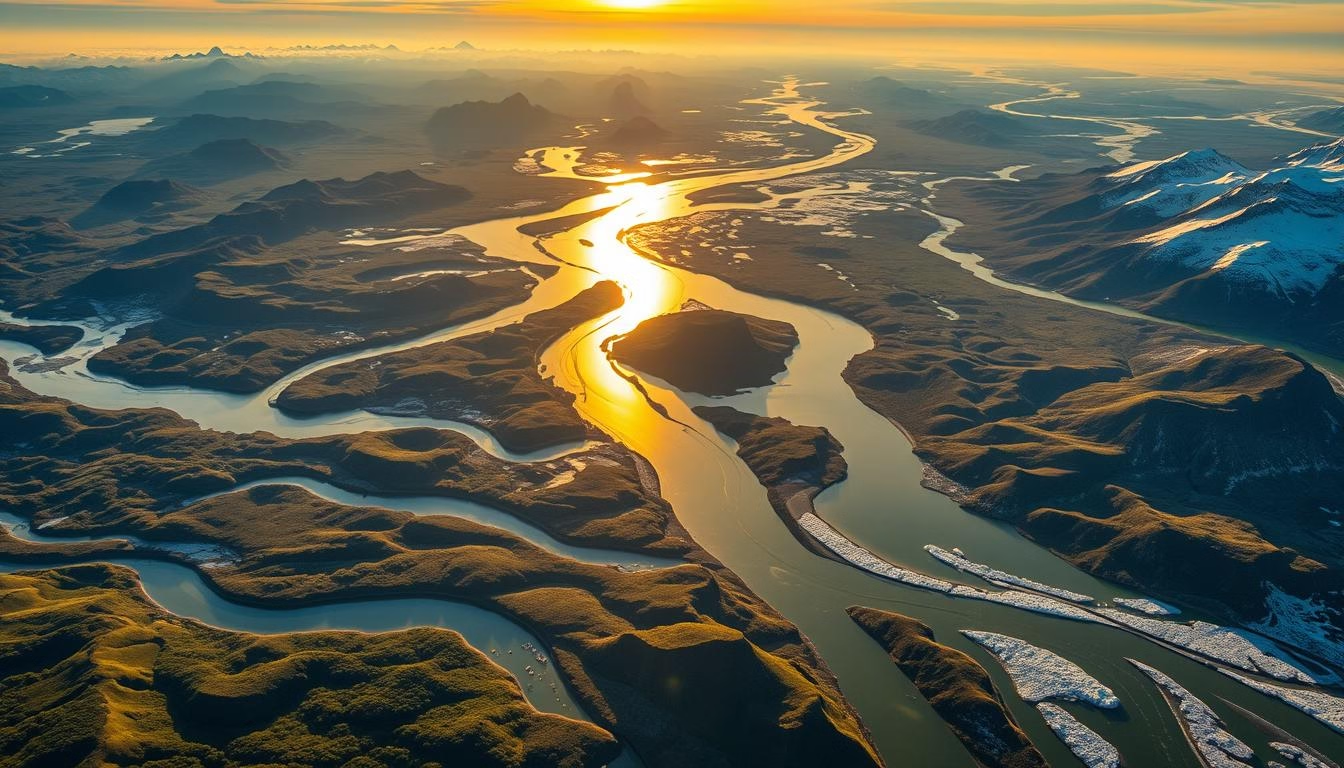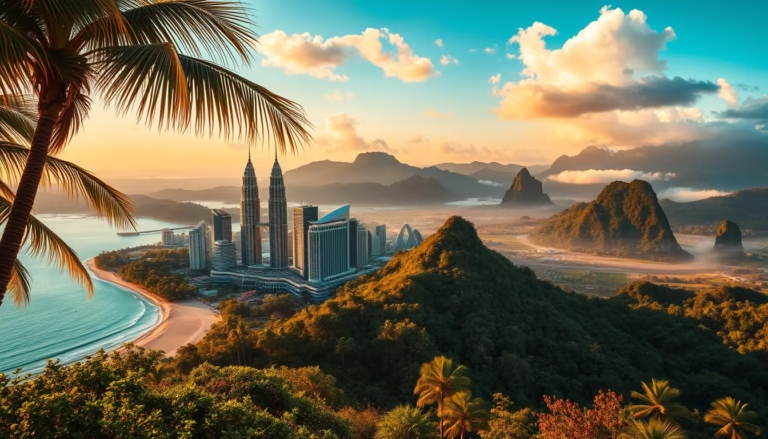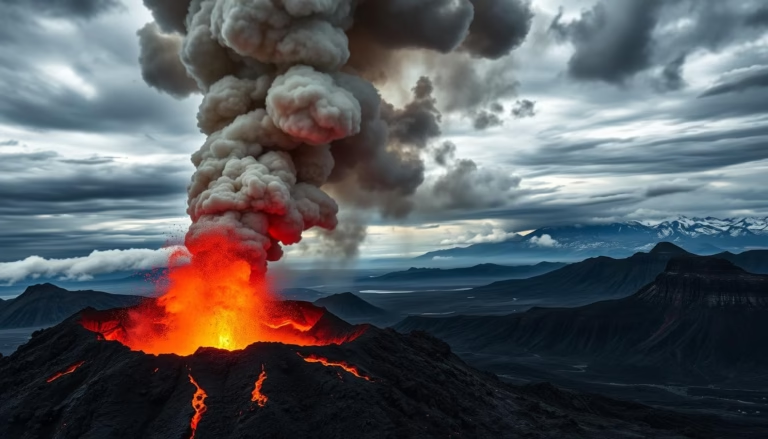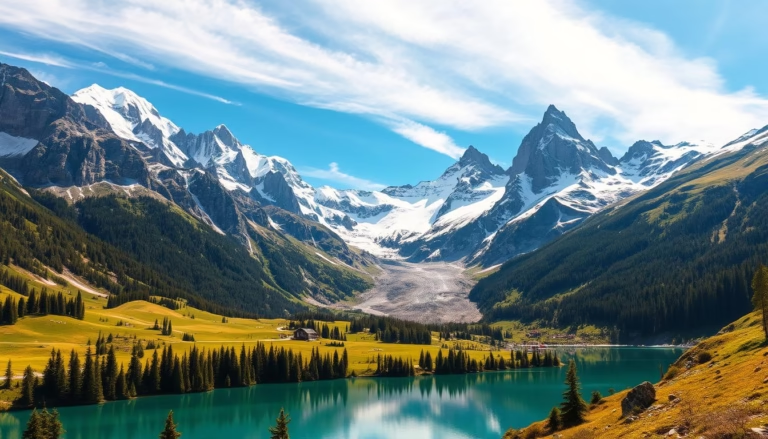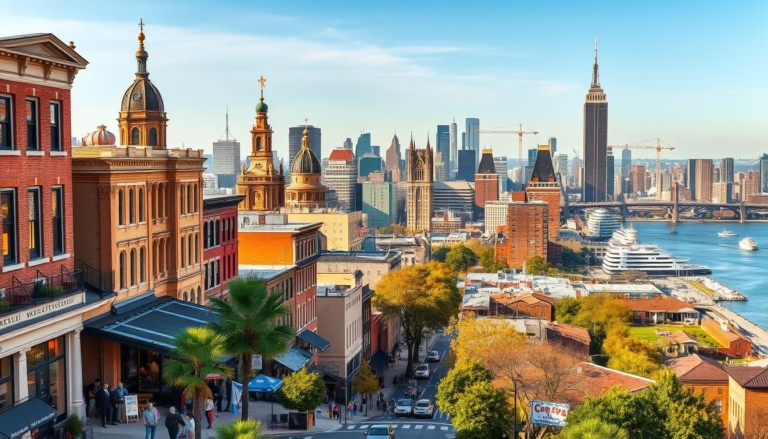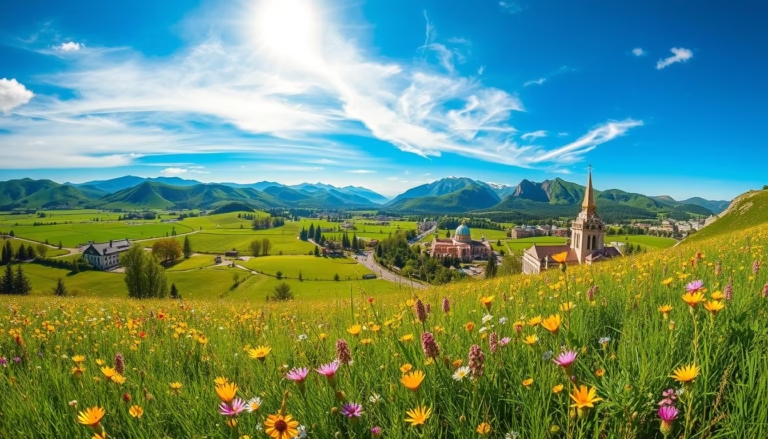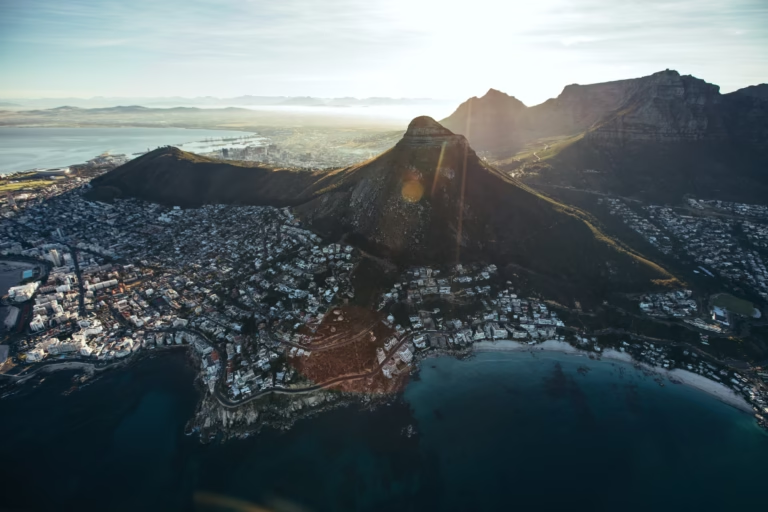Discover the Most Important Rivers in the World Today
Flowing through continents like nature’s highways, freshwater arteries have shaped human history and ecosystems for millennia. Over 150,000 named waterways stretch across Earth’s surface, from tropical basins to frozen tundras. These dynamic systems supply drinking water to billions, irrigate crops that feed nations, and host diverse wildlife habitats found nowhere else.
Ancient societies like Egypt and Rome flourished along fertile banks, while modern cities such as Paris and Shanghai owe their growth to strategic river access. Today, these liquid lifelines remain indispensable. They power hydroelectric plants, transport goods across continents, and sustain fishing industries that drive local economies.
Each watercourse tells a unique story. The Amazon’s labyrinthine channels breathe life into rainforests, while Siberian currents carve paths through permafrost. Some serve as cultural touchstones, inspiring art and folklore. Others act as political borders yet also spark collaboration through shared management agreements.
However, pollution and climate shifts threaten these vital resources. Melting glaciers alter flow patterns, while dams disrupt delicate ecological balances. Protecting them requires global awareness and innovative solutions – challenges we’ll explore as we journey through Earth’s remarkable freshwater networks.
Key Takeaways
- Freshwater systems support ecosystems and provide drinking water for over 40% of Earth’s population
- Historic civilizations and modern cities developed around strategic river locations
- Waterways enable transportation, agriculture, and renewable energy production worldwide
- River networks range from tropical basins to ice-fed northern channels
- Sustainable management grows increasingly urgent amid environmental changes
Introduction: The Life Force of Our Planet
From mountain springs to ocean deltas, freshwater channels sustain life across the globe. These liquid pathways function as Earth’s circulatory system, transporting nutrients and water to every ecosystem they touch. Over 65% of irrigated farmland relies on their steady flow, turning arid regions into breadbaskets that feed nations.
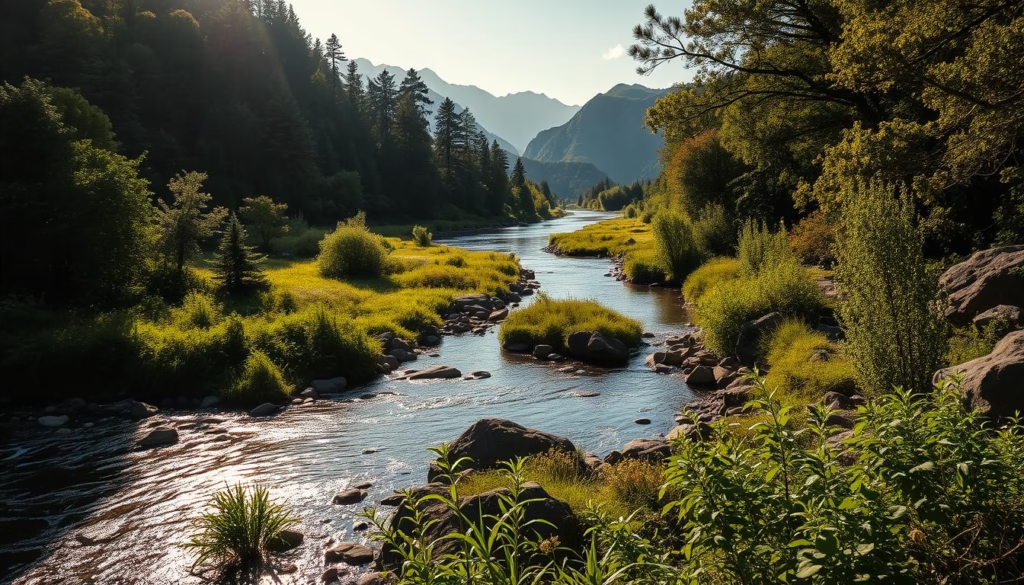
Trade flourished where currents meet. Ancient merchants floated goods along the Nile and Yangtze, while modern barges haul cargo down the Mississippi. Cities like London and Bangkok grew where river bends offered safe harbors and strategic advantages.
Biodiversity thrives in these corridors. Salmon leap through Alaskan rapids, while Amazonian pink dolphins navigate flooded forests. Microscopic plankton fuels food chains reaching from herons to humans. Seasonal floods deposit mineral-rich silt, creating fertile plains that support crops and wildlife.
Currents also sculpt geography. The Colorado River carved the Grand Canyon over millennia, while the Ganges-Brahmaputra delta expands yearly with Himalayan sediment. These ever-changing shapes influence rainfall patterns and regional temperatures.
Beyond physical impacts, waterways hold deep cultural meaning. Hindu devotees bathe in the Ganges for spiritual renewal, while Indigenous tribes along the Columbia River share creation stories tied to its flow. Such connections remind us that these channels aren’t just resources – they’re living threads in humanity’s shared story.
Historical Significance and Cultural Legacy
Long before highways crisscrossed continents, liquid corridors nurtured humanity’s earliest achievements. These dynamic channels didn’t just quench thirst – they sparked innovations in governance, art, and commerce that still shape our world.
Rivers in Ancient Civilizations
The Nile River transformed arid sands into Egypt’s breadbasket through annual floods. Farmers celebrated “Hapi”, the river god, whose predictable surges deposited nutrient-rich silt. This allowed ancient Egypt to stockpile grain surpluses, fueling pyramid construction and hieroglyphic scholarship.
Meanwhile, Mesopotamia’s Tigris and Euphrates birthed urban living. Babylon’s hanging gardens and Ur’s ziggurats rose from their banks. “The land between two rivers” became humanity’s first laboratory for written laws and wheeled transport.
Trade Routes and Urban Development
Waterways acted as ancient Amazon Prime routes. Roman merchants shipped olive oil down the Tiber, while Chinese junks carried silk along the Yangtze. Cities like Paris grew where Seine River bends simplified boat navigation and flood control.
Military leaders exploited currents strategically. Julius Caesar crossed the Rubicon to march on Rome, while the Danube shielded empires from northern invasions. Today’s cultural identity still echoes these watery boundaries and trade networks.
Why the Most Important Rivers in the World Matter
Earth’s freshwater channels act as both life-givers and economic engines. Over 2 billion people rely directly on flowing water systems for drinking and sanitation. Farms drawing from these sources produce 35% of global food crops – imagine Iowa’s cornfields nourished by the Mississippi or India’s rice paddies fed by the Ganges.
Hydroelectric power plants along major channels like China’s Yangtze generate 16% of the world’s electricity. This renewable energy slashes carbon emissions while powering cities from Brazil to Norway. Check out how key systems compare:
| Function | Example | Impact |
|---|---|---|
| Agriculture | Nile River Basin | Irrigates 11 countries |
| Energy | Three Gorges Dam | Powers 10% of China |
| Trade | Mississippi Waterway | Moves 500M tons/year |
These liquid highways enable affordable shipping – a barge moves goods 15x cheaper than trucks. From Amazonian tributaries to European canals, they connect factories to ports worldwide.
Unique ecosystems thrive where currents flow. The Mekong shelters 1,300 fish species, while the Congo’s rapids home rare goliath tigerfish. Wetlands along their banks filter pollutants naturally, protecting downstream communities.
Tourism adds another layer of value. Whitewater rafting on the Colorado and Rhine river cruises generate $140 billion annually. As climate patterns shift, protecting these resources becomes everyone’s business.
Natural Marvels: Longest Rivers and Vast Basins
Earth’s grandest waterways rewrite maps and reshape continents. These colossal channels carve valleys, feed forests, and power cities through sheer scale and relentless flow.
Rivers That Define Landscapes
The Nile’s 6,650-kilometer journey through Africa holds the longest river world title. Its annual floods built Egypt’s farmlands over millennia. South America’s Amazon follows closely at 6,400 kilometers, pumping enough water daily to fill 8 billion bathtubs.
Asia’s Yangtze stretches 6,300 kilometers, while North America’s Mississippi-Missouri system spans 6,270 kilometers. These giants create:
- Canyons deeper than skyscrapers
- Deltas larger than entire states
- Floodplains supporting global agriculture
Ecological and Hydroelectric Impact
The Amazon’s 7-million-square-kilometer drainage basin hosts 10% of known species. Meanwhile, China’s Three Gorges Dam on the Yangtze produces enough hydroelectric power for 70 million homes annually.
Engineers balance human needs with nature’s rhythms. Flood control systems protect cities, while fish ladders help salmon bypass dams. These efforts show how respecting a river’s length and flow preserves ecosystems for future generations.
Rivers Shaping Human History and Identity
Liquid borders have divided nations while flowing currents united cultures. The Danube exemplifies this duality, winding through 10 countries from Germany’s Black Forest to Ukraine’s delta. Four capital cities thrive along river banks, where medieval castles overlook modern cargo ships. “Water knows no borders,” notes a European diplomat, “but it teaches us to share.”
These channels shape national stories. The Thames birthed Britain’s naval dominance, while Mark Twain’s Mississippi tales defined American frontier spirit. In Southeast Asia, the Mekong sustains 60 million people across six nations through rice farming and fish harvests.
| River | Countries | Cultural Role |
|---|---|---|
| Danube | 10 European nations | Shared trade agreements |
| Mekong | 6 Asian countries | Fishing traditions |
| Nile | 11 African states | Ancient irrigation systems |
Water disputes often spark tension but also cooperation. The Danube Commission, formed in 1856, remains Europe’s oldest international body. Meanwhile, Mekong nations collaborate on sustainable fishing quotas despite competing needs.
Festivals keep river heritage alive. Vienna’s Donauinselfest draws millions to celebrate music beside swirling waters. In Laos, boat races honor the Mekong’s life-giving power. These traditions remind us that flowing currents still write humanity’s story.
Modern Impact: Water, Wildlife, and Economic Power
21st-century demands transform flowing channels into hubs of innovation and adventure. Cruise ships glide past medieval castles on the Danube, while scientists track endangered species in the Amazon’s depths. Balancing human needs with ecological health defines modern river stewardship.
Tourism and Recreational Journeys
European capitals like Vienna and Budapest draw millions through river cruise packages. Go Ahead Tours reports 40% growth in Amazon expeditions since 2020, blending wildlife spotting with Indigenous cultural exchanges. Kayakers paddle through Grand Canyon rapids, while anglers cast lines in Montana’s trout-rich currents.
Resource Management and Hydroelectric Power
China’s Three Gorges Dam exemplifies clean energy potential, generating 22,500 megawatts of hydroelectric power. However, engineers now prioritize fish ladders and sediment management. “We’re learning to harness water without strangling ecosystems,” explains a dam designer.
Smart sensors track pollution levels in real time across major basins. Restoration projects revive salmon populations in Washington’s Elwha River, while international treaties protect migratory birds along the Mississippi Flyway. These efforts preserve wildlife homes while supporting local economies through fishing and ecotourism.
Regional Highlights: North America, Europe, Asia, Africa, and Australia
Continents reveal their personalities through flowing channels that fuel economies and cultures. Let’s explore how major waterways define regions across the globe.
North American Waterways
The Mississippi-Missouri river system ranks as Earth’s fourth-longest, stretching 6,270 kilometers. This liquid giant drains 40% of the United States, carrying grain from Midwest farms to the Atlantic Ocean. Barges transport 500 million tons annually – enough to fill 7 million railcars.
European and Asian River Systems
Europe’s Danube flows through 10 nations before reaching the Black Sea. Asia’s Yangtze River, the third-longest worldwide, powers China’s economy with hydroelectric plants and shipping lanes. Both systems showcase how rivers unite diverse landscapes.
Australia’s Murray-Darling Basin supports 40% of the continent’s agriculture. Africa’s Nile and South America’s Amazon continue shaping civilizations, proving that every region relies on its flowing lifelines. Protecting these networks ensures thriving ecosystems and stable economies for future generations.
